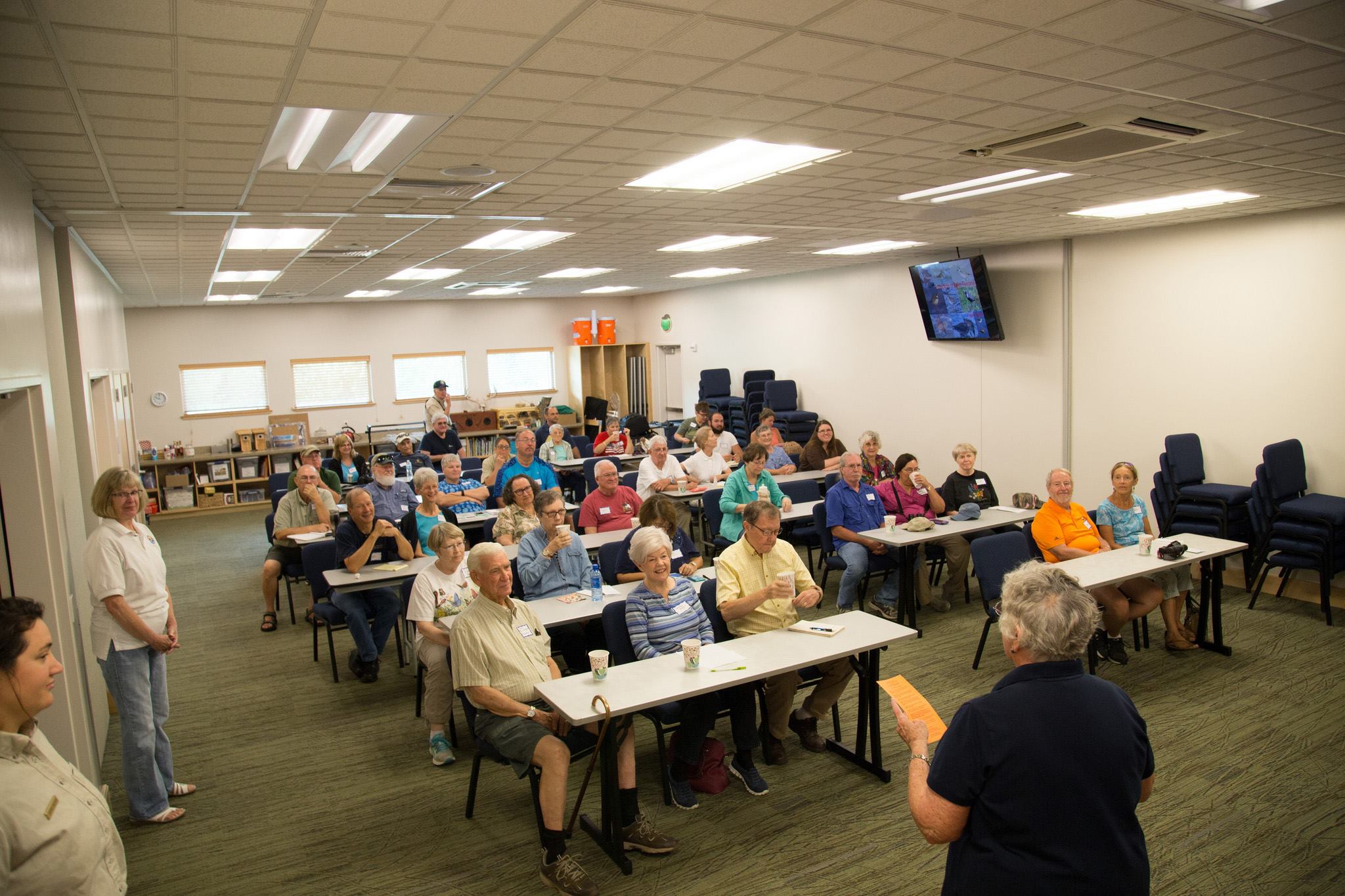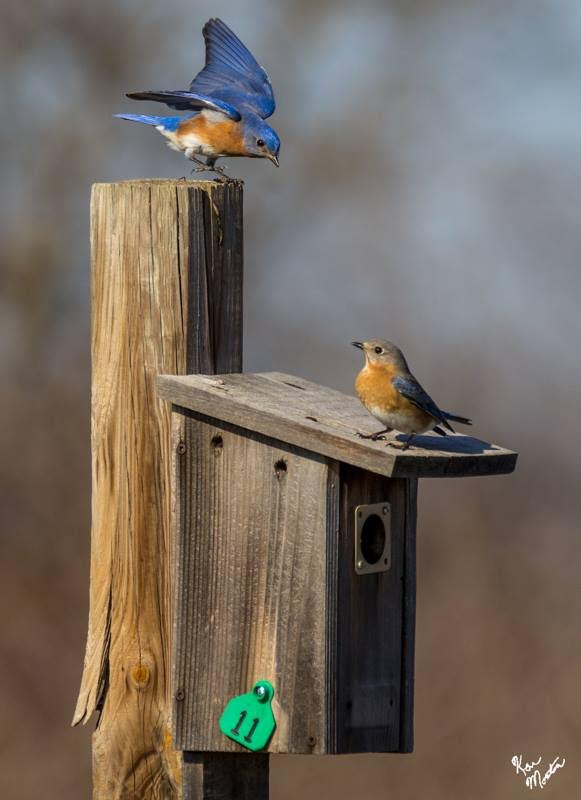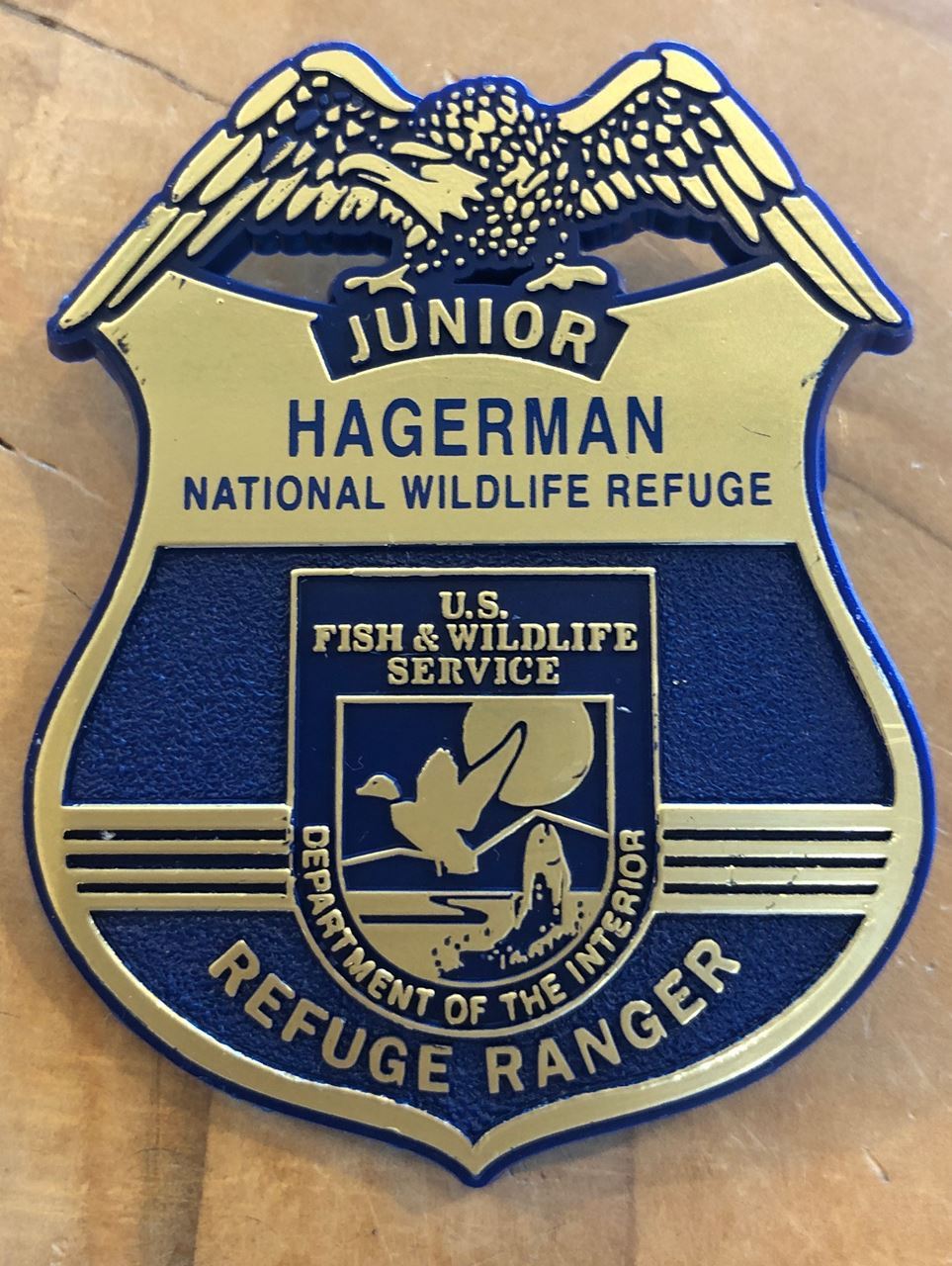Lake Texoma is a large, human-made reservoir on the border of Texas and Oklahoma that was created by damming the Red River in the 1940s. Imagine what the Red River Valley must have looked like in the 1700s – the saline water of the Red River flowing in from west Texas meeting the fresher water of the Washita River coming from the north. Near the confluence of the two rivers were huge expanses of prairie full of wildflowers and native grasses being grazed by bison. Along the south side of the Red River (near the present-day dam) were tall, limestone bluffs. Lake Texoma, Google Earth, 2024 Go back even further in time. The Cretaceous Period lasted from 66-145 million years ago (mya). North Texas looked much different then, and most of the rocks found across north Texas were deposited at that time. During the Cretaceous, there was a large interior seaway across much of the U.S. and most of Texas was on the ocean floor. The Gulf of Mexico also reached much farther north into southern Oklahoma. The climate was more tropical, and dinosaurs roamed the low-lying mudflats and beaches of the Gulf of Mexico with the towering Ouachita Mountains in the background. The Ouachita Mountains of southern Oklahoma were formed roughly 300 mya and were similar to the Rocky Mountains of today. Weathering and erosion have since decreased their height, but their beauty remains. |
 How the coastal Ouachita Mountains may have looked during the Cretaceous. Photo by Margaret Avard |
In Grayson County, numerous fossil seashells, corals, sharks’ teeth, and other evidence of marine life can be found around Lake Texoma and along creek beds. Nearby, where swampy lowlands used to exist, large dinosaur skeletons (such as Acrocanthosaurus) have been recovered. Even the state rock of Texas is petrified palm wood – a reminder of the tropical palm trees and beaches of the Cretaceous Period.
|
Some local fossils. Photo by Margaret Avard Another interesting time span was approximately 170-290 mya. North Texas was located on the ocean floor along the equator (0o latitude, well south of its present location of ~33o N) explaining why fossil corals (which can only grow in a narrow marine zone along the equator) can be found throughout the state – even on top of Guadalupe Peak, the highest point in Texas! How do we know all of this? From identifying fossils and examining rock types. If a dinosaur skeleton is found, dinosaurs used to live here! If you find seashells and sharks’ teeth, this used to be an ocean. Petrified wood would tell us that this used to be land, and tree bark can often be so well preserved that you can identify the specific type of tree. Because plants and animals have preferred habitat types, plant and animal fossils can reveal a tremendous amount of information about local conditions in the past such as climate (temperature, rainfall), elevation, latitude, and ocean conditions (temperature, current, depth, clarity). Sedimentary rocks are those that have formed at the Earth’s surface from pieces of pre-existing rocks (sediment), by chemical processes, or by once-living organisms and help in reconstructing the history of the Earth. In geology, the present gives clues to the past. For example, where can you go now to find large accumulations of sand? Most probably either a beach (shallow marine) or desert. For this illustration, we will use a beach (because there are many beaches worldwide and because the sand looks different on a beach than it does in the desert). Think about a beach ……… does the sand stop at the water? Maybe, maybe not. How thick is the sand? Maybe inches, maybe hundreds of feet. How far out into the water does the sand go? Maybe inches, maybe hundreds of miles. Over millions of years, with compaction of the sand and the movement of water carrying dissolved minerals (which acts as a cement) through the sand, the sand is lithified into the sedimentary rock called sandstone. It could be a small, thin layer of sandstone or it could be a layer hundreds of feet thick and hundreds of miles wide. So, if we go outside around here and find a layer of sandstone, this area was probably once a shallow ocean. This is called an environment of deposition, and each sedimentary rock has its own condition(s) under which it was formed. Here are some sedimentary rock types and their environment(s) of deposition. Most of the rocks in Texas (and all of the rocks in Grayson County) are sedimentary which, as you can see above, tend to be coastal/ocean floor deposits. Indeed, most of Texas was on the ocean floor for literally millions years (from about 500-100 mya). As sea level fell and more of Texas became dry land, other plants and animals began to live in these new habitats. At one time animals such as camels, sloths, mastodons, saber tooth cats, and giant armadillos used to roam around the state! Texas has had a very long and varied geologic history. Oceanfront property in north Texas? Absolutely—but about 100 million years ago!
Acrocanthosaurus ©Warpaint/Shutterstock.com |
Refuge Update: Though refuge lands are open from sunrise until sunset every day of the year, the Visitor Center is open Monday through Saturday 9-4, Sunday 1-5. The Snow/Ross Geese are arriving! Come on out and enjoy! The Nature Nook is a great place for Christmas shopping. Please Note These Upcoming Hunt Dates: During the hunts, Harris Creek, Haller's Haven, Raasch, and Crow Hill Hiking trails will be closed. Meadow Pond Hiking Trail will remain open. |
Photos by Pam Rendall-Bass More Amazing Nature Photos taken at the refuge (Facebook account required.) |
Upcoming Activities:
The Friends of Hagerman is Hosting 13 Family Friendly Events in December! Donate to help fund programs like these! |
|
Every November thousands of Snow and Ross Geese incredibly make their way to Hagerman from the Arctic Tundra. Photo by Laurie Sheppard Shhhhh...They are Resting The Snow/Ross geese arriving to Hagerman National Wildlife Refuge will have recently made an exhausting 3,000-mile trip from the Arctic Tundra. When they finally reach the refuge, they will find their perfect habitat managed by refuge staff, and hundreds of acres of wheat planted just for them. After all, these geese and other migratory birds of all types, are the primary reason our refuge exists! Please come and enjoy the incredible sight of thousands of geese! Please also respect their need to seek refuge and feed in peace: it is critical to their survival to regain their strength through diet and rest. Disturbing the geese is a federal offense, possibly resulting in hefty fines. |
Rewilding: Preparing the Habitat for Winter By Karen Glenn, BPTMN Using the Leaves and Brush in a Good Way. Photo by Karen Glenn The rain has finally arrived, the drought seems to be over, and the burn ban has been lifted for Grayson County. The fragrance of burning wood is in the air as people begin fall clean up. Winter is creeping in as the weather cools, and with it the leaves are beginning to pile up. The recent storms filled yards with branches and broken tree limbs. Sounds like a lot of work, but it is actually a fun time of year to get out and learn about winter landscapes. It may look like everything is dying, but there is still a lot of life going on behind the scenes. Rewilding is about recognizing the natural cycles in nature and trying to replicate and support them as much as possible. Allowing plants to rest and go into dormancy is an important part of the overwintering process. Give yourself time to learn about the activity going on in your habitat before plunging into that winter cleanup. It is not a race. Like a popular meme says, it is okay to leave the leaves. They will turn into soil, not break into your house to drink all your wine! The native plants and animals need all the shelter and food resources they can get, and we can all make big differences locally by doing small things to support the natural processes going on all around us. Frogs, turtles, birds, butterflies, bees, and other small animals depend on leaves to help them overwinter. Removing leaves from the landscape also removes all the stored nutrients the soil needs for future growth. Photo credit: Jack Wallington, November 12, 2022. I will admit it, I burned a small pile of downed limbs, vines, and unwanted plant material, but I have other plans for the small trees and branches that will be thinned out this month. All the leaves stay put as much as possible here, but we will be removing quite a few young redbud, cedar, catalpa, and mulberry volunteers this year. My plan is to keep as much plant material on the property as possible, so burning will be minimal. I have been looking into alternatives for dealing with woody cuttings and trees besides burning brush piles and hauling yard waste off. We need a few new brush piles, so we will begin there, but most of the woody material will not be burned. Instead, it will be used to create rich soil. A small brush pile provides important shelter and an abundant food source for insect-eating birds and small animals. Photo credit: Vic MacBournie, 2020, https://www.fernsfeathers.ca. Brush piles are crucial for overwintering birds and other wildlife. When we clean up our yards and throw away the leaves and tree branches, we are also throwing away hundreds, if not thousands of insects that could be next year’s pollinators and winter food for birds. Insects will readily populate a brush pile providing a winter café for foraging wildlife. Birds and small animals, like frogs and lizards, will seek shelter inside when storms roll in or temperatures plummet. Most yards have space for a small brush pile, and it is one of the easiest ways to provide a much-needed resource for overwintering birds. Audubon suggests starting with larger branches, spaced a few inches apart to create cavities, then a second layer of medium branches. The smallest branches, leaves, and other yard materials can then be placed on top, leaving a few open areas here and there. It is a good idea to build new piles every year, since the structure will begin to break down and return to the soil within 2-3 years. Once a pile begins to collapse, its use as shelter for birds diminishes with age, but its use as an energy source for soil microorganisms and fungi increases! I usually allow the natural processes to happen, but many people suggest burning older wood piles in late spring. An active brush pile in the winter is a bird magnet, so if you decide to provide this shelter, make sure one is within viewing distance of a window. It will provide hours of entertainment all winter. Over winter break we will use some of the wood and brush for a couple of projects. We plan to build wattle fencing with the smaller branches and try a technique called hügelkultur, which will use up larger branches and logs.
|
Examples of simple wattle fencing used as partitions and/or enclosures in the landscape. It is a fantastic way to use small branches and twigs while providing a natural look that blends in nicely with native habitat.
Wattle fencing is a cheap and straightforward way to build small garden fencing while using waste branches and small trees. I plan to put a couple of low fences around trees and an herb garden I want to start in the spring. The idea is simple and requires relatively small, easy to handle pieces and simple tools to construct. To begin, cut small tree trunks about a foot longer than the desired height for the fencing. Make sure to taper the bottom of each vertical post, to make it easier to pound into the ground, then drive the posts in the ground, following the desired shape. Spacing is usually 1-3 feet depending on the amount of curves in the design. Once the posts are in place smaller, flexible branches, stripped of side shoots, are woven through the upright posts. I plan to let the smaller limbs dry out on a wood pile, then soak them in water the day before using them, to help prevent breakage. Once everything is in place, clip any stray ends and the fence will settle and provide several years of utility. It is flexible, able to make small, tight circles, and once settled it becomes fairly strong. Creative gardeners have used willow fronds, or other trees that readily sprout, to create a living fence. I am not quite that ambitious yet, so I will mostly be using dried out redbud for this project. Wattle fencing may be used to support tall, unruly plantings while blending into the background. The style is only limited by materials and imagination. Wattle fencing may be built almost any height, as long as the upright posts can support the weight of the woven branches The second winter project will be started as a possible solution to an erosion problem. I live at the base of a rather large hill. A few years ago, a landowner on the property above me removed all the terracing put in place in the early 1900’s to control water runoff. This has resulted in flooding and erosion problems across my property. My ponds are spring fed, and with the water running rapidly down the slope, it is no longer being filtered underground before entering the pond. This one change has had a huge effect on the habitat and washed excess nutrients into the south pond. After looking over options, I decided to try an ancient one. It is referred to as hügelkultur, or “mound culture” in German, and it is an incredibly old practice. Inside view of a typical hügelkultur. This mound structure is built on large logs and woody debris. There is detailed information on how to build a hugelkutur to manage water run off from the Oklahoma State University Extension office: https://extension.okstate.edu/fact-sheets/sustainable-landscapes-creating-a-hugelkultur-for-gardening-with-stormwater-management-benefits.html Hügelkultur is similar to building a wood pile, but under the soil. It is a slower process. If built this winter, the mounds will not be ready for planting until next fall/spring. To build a hügelkultur, a trench or small bed is dug up about 1-2 feet deep. This trench is filled with larger logs and tree branches, stacked neatly to fill the space. A layer of medium-sized branches is added, then organic material on top of that. Anything that can be composted is added to the pile to fill in space and pack between the logs and branches. A layer of grass/turf removed from the area, flipped upside down, is added on top of the organic matter. Once the stack is the height desired, all the removed soil is added to the mound to cover the pile until it is thoroughly buried. It is a good idea to cover the mound with a thick layer of mulch for the first year. The entire structure should be heavily watered in and allowed to rest for several months to a year. Just like a wood pile, it will begin to collapse inside, rapidly, since the wood will be moist and surrounded by soil organisms and fungi. A hügelkultur should be built a couple of feet higher than desired, to allow for settling. The hügelkultur technique also works in raised bed containers and is the model used for lasagna layering to prepare garden spaces. Photo credit: Rosina Buckman, Australian permaculturist. Layering these materials creates a very long-lived raised bed that will feed plants for years. If built parallel to a slope, the beds may be used to channel water away from flood prone areas, much like terracing, with minor destruction in the landscape. Once the wood begins to decay, it will soak up water like a sponge. These beds conserve and channel water, feed plants, and extend the growing season for crops. This is also a great technique for filling enclosed raised garden beds. No wonder raised mounds have been used in agriculture for hundreds, if not thousands, of years! Instead of burning piles of wood and leaves, it makes more sense to use a little creativity to enhance the habitat while building up the soil. A healthy habitat should become more productive over time, not less. Removing biomass every year by throwing away all that plant productivity from the growing season makes the soil weaker and more nutrient deficient. We could all take a lesson from nature and learn how to give it a rest in the winter! |
|
|
Frostweed in the Butterfly Garden It was cold enough on Black Friday to cause some of the Frostweed in the Butterfly Garden to form gorgeous ice crystals, and frost on many of the other plants. Some of the Frostweed is still intact, so we may have another chance to see their crystals the next time we dip below freezing. Photos by Laurie Sheppard |
Christmas Shopping in the Nature Nook! Lots of fun, nature-themed items for the naturalists on your list! Including Loose Neck Turtles: for the kids! Read their fascinating details on the second picture. Lots of knick-knacks, stationery, books and Hagerman long sleeved t-shirts have been restocked! |
The perfect Christmas gift for the bird Lover in your family: Only Three Nestboxes Left to Adopt!
Every year the Friends of Hagerman gives the public an opportunity to support the Eastern Bluebird population and learn all about them via the Adopt-A-Nestbox Program. Participants of the Adopt-A-Nestbox program will be invited to name their adopted nestbox, and visit it along a Hagerman NWR hiking trail as often as they like. Participants will receive an email every week during nesting season with a picture of the inside of the nestbox and an explanation of its stages of development. An adopted nestbox makes a great Christmas gift! |
For more information, visit christmasbirdcount.org Email results of the Feeder Watch to info@friendsofhagerman.org |
Birding with Jack: The Weekly Bird Census Left to Right: Mike Petrick, Nancy Riggs, Jack Chiles and Terry Goode Each Tuesday a team of experienced birders, including Master Naturalist Jack Chiles, traverse 35 miles of refuge roads and hiking trails, documenting every bird they encounter. This Bird Census is reported to The Cornell Lab of Ornithology for use in research, and each week we will bring you a link to their actual bird count, and a summary of their adventures.
Cackling Goose, Surf Scoter LeConte's Sparrow, American Pipit At the beginning of our census temperatures were hovering near freezing, skies were mostly clear and a light breeze was blowing. We started our day on Raasch Trail and as we entered the trail behind the maintenance buildings we found a large group of sparrows in a tree near the bluebird box, most of which were Savannah and White-crowned Sparrows but we were very surprised to see a LeConte's Sparrow in the group. There we also saw a House Wren, Song Sparrows, and a Lincoln's Sparrow. Later we continued on to Harris Creek Trail and found another House Wren near the entrance to the trail. There was a large number of ducks in Meyer's Branch Marsh, including many Green-winged Teals, Northern Pintails, Mallards, Gadwalls and a female Hooded Merganser. At Dead Woman's Pond we found a Western Sandpiper along with Least Sandpipers and Killdeers. There was a Brown Creeper at the picnic area at Goode. Then we proceeded on to Wildlife Drive where we were greeted by a large flock of approximately 4000 Snow and Ross's Geese. In with the large flock was a lone Cackling Goose and 3 Greater White-fronted Geese. In Silliman Marsh we saw a pair of Common Goldeneyes, Buffleheads, Ruddy Ducks, Redheads, Northern Pintails, Lesser Scaups, Gadwalls, Northern Pintails and a lone Canvasback. Then we proceeded to the end of Tern Pad and we saw a duck in the distance near J pad that we determined with use of a spotting scope to be a scoter but we could not tell if it was a Surf Scoter or a White-winged Scoter so we proceeded right away to J pad and determined it was s a female Surf Scoter. We had a good hawk day with a total of 10 Red-tailed Hawks, one of which was a light phase Harlan's Hawk. It turned out to be a really good day and we tallied 87 species. Today's photos, Cackling Goose, Surf Scoter, LeConte's Sparrow, and an American Pipit. Thanks for looking. See the rest of Jack's notes and the latest Bird Census Results |
The Friends of Hagerman NWR Photo Club Join us for the January meeting of the Friends of Hagerman NWR Nature Photography Club. Photo club members, guests, and visitors are welcome to attend meetings. Aviation Photography by Jay Miller Jay Miller is a professional aviation and automobile photographer with over fifty years behind the camera. Major clients include Airbus, Bell, Bob Smith Coachworks, Boeing, Ezell Aviation, Leonardo, Lockheed Martin, Northrop Grumman, Sikorsky, and many sub-contractors and private sector entities. Miller is also the author of some 36 books on aviation subjects. He has worked in the television industry as both a "talking head" and consultant/advisor on many aviation related projects including two appearances on "60 Minutes". Miller is married, has two adult daughters, and two "grandmunchkins". He continues his work as an active contract photographer as these words are written... We are fortunate to have Miller speak at our photo club and tell us about his adventures of capturing photos of aviation throughout the years. Event Leader: Lisa Wilkins For questions about the photo club, contact: Lisa Wilkins, Photo Club Leader Email FOHphotoclub@gmail.com |
The Photo Club Nature Photo Contest: The Results are in!
| Puddles' Craft Corner By Cindy Steele, Master Naturalist |
Honk, Honk: Geese at the Refuge!
Welcome back to Puddles’ Craft Corner. Honk, Honk! It’s that time of year that we hear the sounds of thousands of migrating geese descending on Hagerman Wildlife Refuge! It’s quite a sight to see! If you visit the refuge this month, you could easily see fields of thousands of geese enjoying their winter meal.
The arrival of our winter visitors has been described as geese, “descending like a prairie blizzard.” The sound of their honk, honk, honking is almost deafening.
| There are several species of geese who habitate the refuge during the winter months. Canada geese, snow geese, white-fronted geese, and Ross' geese use the refuge as stop-over and wintering grounds. Migratory birds by the thousands take up winter quarters at the refuge or refuel for long journeys. At times, as many as 10,000 geese can be seen in one field. The geese that arrive at the refuge are traveling along the central flyway. These geese travel as far as 2,500 miles south in the fall and then travel another 2,500 miles back North in the spring. |
For the staff at Hagerman, preparing the 12,000-acre refuge for their visitors is a year-round job. The primary crop, winter wheat, is planted in late summer and September. This grain... |
Continue the Lesson With Full Instructions, enjoy other Nature Crafts with Puddles |
Junior Ranger Program
|
| The Junior Ranger Pledge As a Junior Ranger at Hagerman National Wildlife Refuge, I pledge to protect outdoor creatures small, big and huge. To keep the water, air and land clean. To make enjoying nature a routine. I will share my new skills with family and friends. When people and nature work together, everybody wins! |
|
Sponsors Enable the Friends to…
Join Today! Memberships available for $10 |
Come, Take a Tour on the Wildlife Explorer! Come join us for a ride on the Wildlife Explorer! Our new and beautiful tram is available for ninety-minute tours of Hagerman every Saturday and Sunday, weather permitting. Our tours are as varied as our drivers. Each tram driver has her/his approach to the tour: you may learn about wildlife, birds, habitat, refuge history, photography, you name it! To paraphrase, “a Wildlife Explorer tour at Hagerman is like a box of chocolates, you never know what you’re going to get.” But you know it’s going to be good! Come see us! Lots of stops for bird-watching and photography. |
Register for a Tram Tour Today! |
|
|
Photo by Cathy Van Bebber | Sunrise at the Little Sit by Laurie Sheppard |
Meet Jack and the Bird Census Team and learn how to identify the birds of North Texas while enjoying the beautiful sunrise over Lake Texoma! Modeled after Cornell's national "Big Sit" event, a group of dedicated birders invite you to join them at sunrise to conduct a bird count as multiple species fly to the water and the surrounding land to feed. Leaders will bring spotting scopes and will provide tips for identification of the many species you will see. This event lasts a couple of hours, but all are welcome to come and go as they please. Participants are advised to bring a chair, binoculars and water. The First Saturday of every month, beginning 30 minutes before sunrise. Location: H Pad, Sadler, Texas 76264 (H Pad is in Sadler, but it is part of the refuge) GPS Coordinates: 33.734961, -96.780582
|
|
Early Bird Walk with Jack Chiles Master Naturalist Jack Chiles will lead our Early Birding event, weather permitting. Bring binoculars or borrow ours. Meet at the Visitor Center and return in time for the Second Saturday program. Please Register (Optional) so we may inform you via email of unforseen changes/cancellations. |
Do You Like to Work Outside? The Refuge Needs You! |
It takes a lot of people to have a beautiful garden! The Wednesday Garden Team Love to work with native plants and meet other gardeners? Come and help us add plants, weed and mulch our beautiful butterfly garden. Garden Team volunteers get first dibs on thinned native plants as well as access to seeds and cuttings for propagation. Gardeners meet on most Wednesdays, but times vary. Contact Us to subscribe to the volunteer garden team weekly email. Provide own tools and gloves. Minimum age 18, or 16 if accompanied by parent/volunteer. |
Mowing and Refuge Beautification: The Work Crew Do you enjoy working outside, mowing, sprucing up hiking trails, trimming and removing brush and general cleanup? Show your love for nature by joining the Outdoor Crew at Hagerman National Wildlife Refuge. Outdoor Crew volunteers meet on the First Tuesday and Fourth Saturday of every month. Contact Us for exact times, dates and other details about joining the volunteer Work Crew. Scouts welcome! |
Visitor Center Volunteers Needed! |
Do you enjoy meeting all kinds of people from all over the world, and like-minded people in our area? If yes, consider joining our team of Visitor Center Volunteers. You will greet refuge guests, distribute maps and other refuge information, and make sales in the gift shop. Shifts available every day of the week: Monday through Saturday 9 AM to 12:30 PM and 12:30 to 4:00 PM, Sunday 1:00 to 5:00 PM. Training is provided. Contact Us if interested. |
| Thank You To Our Contributors: Margaret Avard, Jack Chiles, Karen Glenn, Pam Rendall-Bass, Cindy Steele, James Waghorne Refuge Manager: Kathy Whaley Deputy Refuge Manager: Paul Balkenbush Visitor Services Manager: Spencer Beard Friends of Hagerman NWR Foundation 6465 Refuge Road, Sherman, TX 75092 Phone: 903-786-2826 Join us on Facebook: |
Search for any word--do not use quotes for phrases |
Kroger: Stop by the customer service desk at Kroger and link your Kroger Card to the Friends of Hagerman: the Friends will get rewards for every dollar you spend, at no cost to you.
Please add info@friendsofhagerman.org to your contacts to ensure delivery of registration confirmations, account information and the Featherless Flyer
See you at the refuge!


























